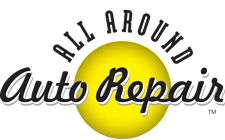“Girls Who Like Cars are not Weird – They’re a Rare Gift from God.” – Unknown
 These days women everywhere are empowered and tend to have a knack for managing almost anything – even brake inspection – however, when it comes to an automobile most of them find themselves confused and bewildered which can more or less leave them and their vehicle in a sticky position at some point.
These days women everywhere are empowered and tend to have a knack for managing almost anything – even brake inspection – however, when it comes to an automobile most of them find themselves confused and bewildered which can more or less leave them and their vehicle in a sticky position at some point.
Understanding the components of a vehicle and how they function or when and how vehicle maintenance should be conducted are some of the main issues females face with vehicles.
Come on ladies, you don’t want to be driving your car at night only to be stalled or worse injured because of neglected vehicle maintenance or repair.
So, in an effort to help educate female vehicle owners about what’s expected to keep vehicles in good condition, this article aims to outline the significance of brake inspection as part of vehicle maintenance since it’s extremely important for personal safety and the safety of others.
How to Tell When Brake Inspection is Needed
Hearing an unusual noise when you press brakes? Or maybe your car takes a while to stop long after you go for brakes? If so, you don’t have to be a mechanic to know that brake inspection is required.
Brakes are important for so many reasons that it’s just plain reckless not to get brake inspection conducted regularly. Despite this, some people may not necessarily know when is the best time to conduct brake inspection.
Well, here are a few instances which indicate when brake inspection is required for a vehicle.
- When vehicles reach the 20,000 kilometers mark or haven’t had brake inspection or replacement in over a year.
- A vehicle is near to or past the manufacturer’s recommended mileage between brake fluid exchanges.
- You see the brake warning light, light up on the dashboard.
- You experience a squealing or grinding noise when you press brakes.
- Your vehicle takes a long time to stop after applying brakes.
- If your brake pedal has no pressure and goes right to the floor when pressed.
Ladies Here’s What You Should Be Inspecting
The Brake Pads – Most times when brake pads are worn out and not replaced, they can damage the discs situated underneath them, which is why it is of the utmost importance to have them checked regularly. Usually not very expensive, brake pads should be changed immediately when worn as they can cost you a whole lot more if you don’t.
The Brake Shoes – Vehicles carrying drum brakes will most likely have brake shoes. A brake shoe functions to carry the brake lining which presses against the drum, so the vehicle can stop. Therefore as part of your brake inspection check to see if the metal on your brake shoe has worn down, exposing the lining. If so you may hear a grinding noise when applying brakes as the shoes are going metal-to-metal with the inside of the drums. Brake shoes should be replaced if they are worn more than halfway.
The Brake Discs – When checking brake discs this is usually to ensure that they aren’t damaged. This is determined by inspecting the thin grooves in the discs all the way around to make sure they have a consistent, shallow, pattern. If it is that your brake discs need to be replaced, it would be best to change both of them together – even if only one is damaged. This will ensure that brakes on both sides of the vehicle work evenly.
Brake Lines – Bottom line is that brake lines should always be protected, and since they’re coated with a soft rubber it’s easy for them to become cracked, stiff or damaged over time. This is why it’s important to have them inspected often as part of brake inspection and if required have them replaced immediately to avoid any further issues.
Brake Fluid – Checking your vehicle’s brake fluid stands to be one of the most important aspects of brake inspection. This not only consists of fluid level checks but also to ensure that you’re using the correct brake fluid and that the brake fluid is at the right temperature since boiling brake fluid can cause serious damage to your braking system. You should also be sure to remember not to let your vehicle’s brake fluid drop to less than 2/3rd full.
If your vehicle is showing signs of brake problems or you just want to find a reputable auto shop to come in to get a brake inspection done, feel free to contact us at All Round Auto Repair. To book your appointment call us at 707-837-0646 or you can visit our website: allroundautorepair.com for more information. Once we complete your brake inspection we’ll diagnose any problems and provide an estimate for repairs if necessary. This should make things a whole lot easier and convenient for you.

